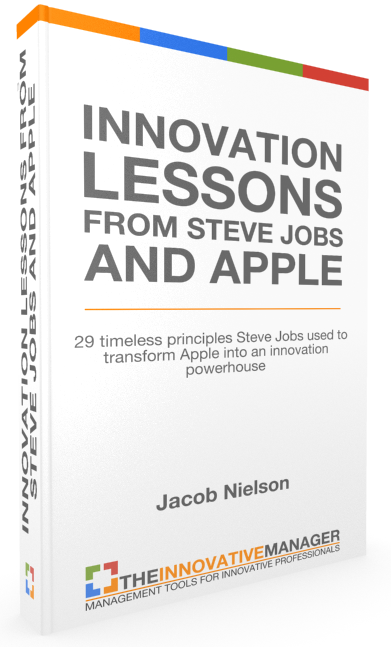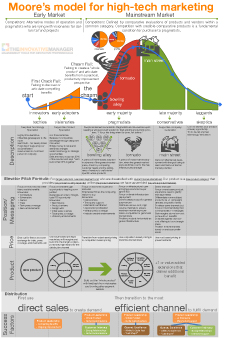In 1989 the blockbuster movie “Field of Dreams” captured two uniquely American ideals: baseball and taking risks to build your dream. The classic line “If you build it, he will come,” emboldened a poor Iowa farmer, played by Kevin Costner, to build a baseball diamond against all odds and at risk of nearly bankrupting his business. Fortunately for him, building his dream paid off and people did indeed come to his baseball field.
But that was a movie. In real life, he would have gone bankrupt.
The Story of Webvan

FREE VIDEO TRAINING FOR INNOVATORS
Over 100 Slides Free and Downloadable as a PDF
Roughly 7 years later at the height of the dot-com bubble, an internet startup emerged with a business model idea many investors were certain would transform the $450 Billion grocery industry. The idea was simple: order your groceries online, using that new-fangled thing called the “internet,” and they’ll be delivered to your door later that same day. Sounds awesome, right?
Investors definitely thought it did, so much so that they put up over $800 million in private and public capital to allow the already successful Louis Borders (who started Borders Bookstore in the 1970’s) to build the business and “Get Big Fast”. Their plan: execute the business model idea and they, the grocery buyers, will come in droves.
Ready, Fire, Aim Go Out of Business
Armed with a war chest of cash, Webvan executed their business plan flawlessly. They hired a seasoned CEO from Anderson Consulting (now Accenture) and lined up an all-star board of experienced venture capitalists. With the help of Bechtel, an acclaimed engineering firm, they built state-of-the-art warehouse fulfillment centers complete with robots and miles of conveyor belts designed to route over 10,000 bins of groceries to their proper shipping area.
At it’s peak Webvan serviced 10 major US markets including San Francisco, Dallas, San Diego, LA, Chicago, and Atlanta.
There was just one issue – customers didn’t come.
In the year 2000, a year after its famed IPO, Webvan generated just shy of $200,000 in gross revenues (Slideshare). Fractions of pennies compared to the $800 million received from investors. The next year, 2001, Webvan ran out of cash and went out of business.
“We believe we had a brilliant concept. We were just ahead of our time.” – Bud Grebey, Webvan spokesman at the announcement in 2001 that Webvan has suspended its operations (WSJ).
The Results of Executing Without Validating
All too often we see this issue of a brilliant entrepreneur with an untested dream and determination to make that untested dream into reality. While few flame out as spectacularly as Webvan, the price paid in lost time and money is substantial.
This begs the question, what went wrong?
In hindsight it’s easy to see that the major mistake Webvan made was executing an expensive business model without answering one fundamental question: do people want to buy groceries online?
At the time, the answer to that question was a resounding no.
But since they didn’t seem to ask that question, or if they did then they didn’t get valid feedback, they pressed forth with the plan. In those days before the dot-com crash, the mantra in Silicon Valley was “Get Big Fast.” The thought was that startups should be laser focused on achieving scale in order to achieve profitability. This was an important assumption in Webvan’s business model as well because the costs to deliver goods was prohibitively high and Webvan’s operations would only achieve profitability when delivered at scale. This further pressurized the management team to execute the business model as quickly as possible.
In Startups Validation > Execution
Since the Webvan debacle ended in bankruptcy in 2001, Silicon Valley startups and investors have been refining a new approach to reducing customer adoption risk: validate assumptions before executing a business model. Otherwise known as the “Lean Startup” movement.
The godfather of this movement is the seasoned entrepreneur and UC Berkeley professor Steve Blank. His approach suggests that the most important thing startups must do is “customer development” in parallel to product development. His ideas have been popularized by his pupil Eric Ries who wrote “The Lean Startup.”
One tool that Steve Blank has written about that has proved helpful to both investors and entrepreneurs is called “Investment Readiness Levels,” a series of milestones start-ups must go through in order to prove their business model hypothesis. Below is an image describing these levels.
Using this series of milestones it’s easy to see where Webvan went wrong as they basically skipped IRL 3: Problem/Solution Validation. The other issue this highlights is that instead of creating MVP’s (Minimum Viable Products) and testing their ideas on a small scale they created fully completed products and tested them on an enormous scale.
Had Webvan’s focus been on validating their business model assumptions before scaling, they may have had an opportunity to pivot early on into doing something that customers actually wanted.
Below is a quick business model canvas I created for Webvan that highlights the areas they validated as viable in green, the questionable areas in yellow and the invalidated areas in red.
 Notice that the customer segment section is red as well as the value proposition. These form the crux of a new business idea and are the most important components of a business model to experiment on first.
Notice that the customer segment section is red as well as the value proposition. These form the crux of a new business idea and are the most important components of a business model to experiment on first.
If they could have a do-over and were thinking of starting this business right now, all they would need is a few days time and a few hundred dollars to run a quick experiment to see if people would want this service. For next to nothing they could have setup a bare-bones website that listed several common grocery items like eggs, milk, bread, etc. Then they could have gone to several homes and asked the people there if they wouldn’t mind trying out this new concept of 30 minute grocery delivery. They could show the website and have the customer take some orders. Those orders could have been texted to someone at a grocery store nearby (before building a giant multi-million dollar warehouse) who would buy the items and deliver them to the person’s home. They could then ask the person “Is this how you would want to buy your groceries?”
This simple experiment, ran several times with several different types of people, could have saved $800M in lost investment capital!
Webvan is a classic story of why we needed the principles in the Lean Startup. It’s a refreshing alternative to the “If we build it, they will come” strategy!

















One Response to "If We Build, They Will Come: The Story of Webvan"